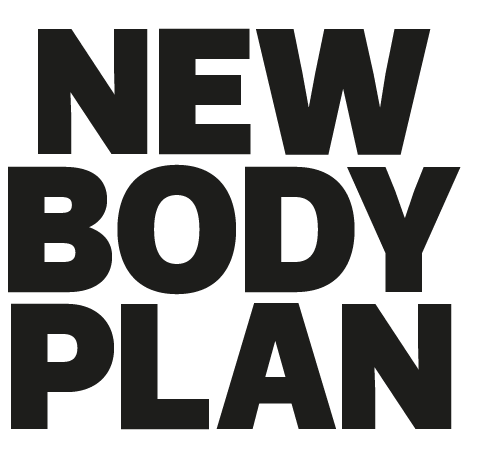What is Non Sleep Deep Rest and should you try it?
Harness the unparalled power of Non Sleep Deep Rest to take your professional and physical performance to the next level, says New Body Plan’s Joe Warner
In the fast lane of today’s demanding lifestyle, finding genuine respite can seem like an elusive luxury. But tucked away from common knowledge lies an extraordinary ally: non sleep deep rest (NSDR). Far from a fleeting wellness trend, NSDR—a rejuvenating state of consciousness experienced without sleeping—promises to bolster mental fortitude, sharpen cognitive abilities, and enhance physical recovery. Intrigued? You should be if you’re serious about optimising your performance, recovery and results. Here’s what you need to know!
Find your perfect fat-loss plan!
Take the New Body quiz!
What is non sleep deep rest (NSDR)?
NSDR is a state of profound relaxation that goes beyond typical rest, achieved while remaining fully awake. Unlike leisure activities such as reading or lounging, NSDR engages methods that facilitate an even deeper sense of rest, akin to the restorative stages of sleep but experienced consciously. It offers a unique pathway to restoration, often overlooked in our sleep-focused dialogues about rest.
How does NSDR differ from meditation?
While there’s some overlap, NSDR and meditation are distinct practices. Meditation typically involves an element of focused awareness or mindfulness, maintaining a concentrated state of mind. In contrast, NSDR may utilise various techniques to induce a deep rest state, devoid of specific cognitive effort. As underscored in a study published in Consciousness and Cognition (2018), “meditation and rest periods can elicit different experiences and levels of restfulness,” emphasising the uniqueness of both.
What are the benefits of NSDR?
NSDR presents a plethora of benefits, spanning mental, emotional, and physical dimensions. Notably, it can serve as a powerful stress-buster. A study featured in the American Journal of Health Promotion (2017) highlights that “regular practice of deep rest techniques can reduce stress, anxiety, and depressive symptoms.” By assisting in managing stress levels, NSDR contributes to cognitive clarity, emotional equilibrium, and physical recovery, thanks to the enhanced activation of the body’s rest-and-digest parasympathetic nervous system.
How does NSDR contribute to physical recovery?
Delving into NSDR taps into the body’s natural recovery mechanisms, potentially fast-tracking physical restoration. The restorative state reached during NSDR elicits the body’s parasympathetic response, tempering stress hormones and promoting healing processes. As a study published in Frontiers in Physiology (2018) notes, “Relaxation techniques show promise for reducing the physiological response to stress among athletes.” By dialling down this stress response, NSDR may expedite muscle recovery, enhance immune function, and support overall bodily recuperation.
Can NSDR improve sleep quality?
Indeed, NSDR can bolster sleep quality. By helping to manage daily stress and cultivate a serene mental landscape, NSDR can contribute to more restful, quality sleep. A review study in Sleep Medicine Reviews (2018) points out that “mind-body interventions, including meditation and relaxation techniques, can produce significant improvements in various dimensions of sleep quality.” Thus, regular NSDR practice may lead to more restorative slumber.
How can I practice non sleep deep rest?
Achieving NSDR involves specific techniques such as guided relaxation, yoga nidra, or certain forms of deep meditation. Each method aims to guide you gently into a deeply relaxed, restorative state while you remain awake. Experiment with different techniques to find what resonates best with you, and remember—creating a peaceful environment conducive to relaxation will enhance your NSDR practice.
How long should I practice NSDR?
The duration of your NSDR practice is a personal journey, dependent on your comfort and the depth of relaxation you can attain. You might begin with short periods, say 10-15 minutes, gradually extending your practice as you grow more adept at inducing this restful state. Consistency is key—the regular integration of NSDR into your daily routine will cultivate a more profound, sustainable impact.
How can I start – and get better – at non-sleep deep rest?
- Establish a consistent daily routine for NSDR, slotting it into your schedule like you would a gym session or meal.
- Experiment with various NSDR techniques, including guided relaxation, yoga nidra, or certain deep meditation practices, to find what works best for you.
- Consider coupling your NSDR practice with complementary recovery strategies, such as light stretching, mindful breathing, or a pre-practice ritual to signal to your body that it’s time to relax.
- Dedicate a quiet, comfortable space for your NSDR practice where you won’t be disturbed—creating a conducive environment will enhance your ability to achieve deep rest.
- Patience and persistence are key. Like mastering any skill, inducing deep rest takes time, practice, and consistency.
Find your perfect fat-loss plan!
Take the New Body quiz!
How to use the chest press machine to build a bigger and stronger chest

